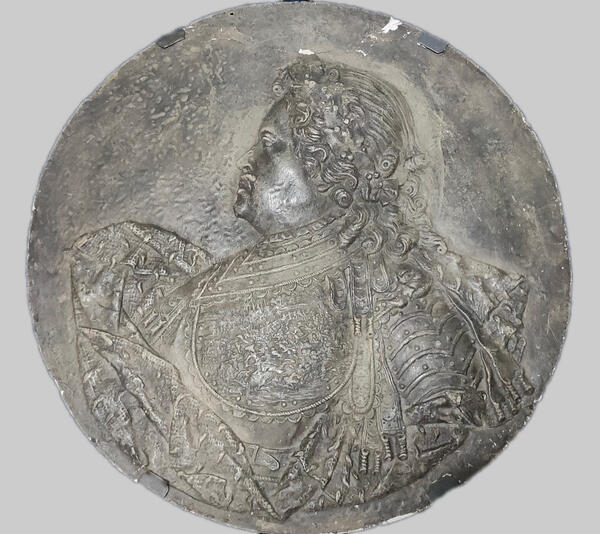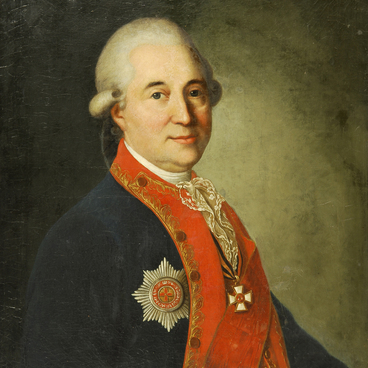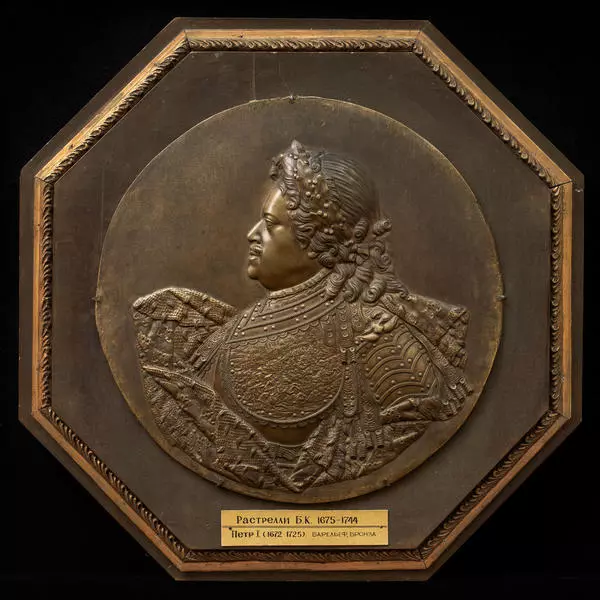Bartolomeo Carlo Rastrelli created a ‘bas-relief sculpture with the image of Peter I, ” in 1723. He used plaster for this sculpture. Peter I is dressed in a cuirass here, a type of armor in the form of a metal shell that covers the chest and back of a warrior. The surface of the armor is decorated with scenes of a battle. The top of the cuirass is cloaked with an ermine mantle. It symbolizes the Emperor’s power and nobility. The head of the Russian Emperor is crowned with a laurel wreath. This symbolizes the Russian Empire’s victory in the Great Northern war, which occurred from 1700 to 1721.
The life of Bartolomeo Carlo Rastrelli was closely tied to the rule of Peter I. The Italian sculptor was born in Florence, into a wealthy family and a son to the nobleman Francesco Rastrelli in 1675. In his childhood, the boy showed great aptitude for art, and was sent to the art school of Giovanni Battista Foggini to study the art of sculpting. Young Rastrelli studied in the art of casting, jewelry-making, theatrical design, and architectural planning and construction there. That comprehensive groundwork allowed him to really utilize his creativity in his work.
After his studies, Rastrelli first set off for Rome and then to Paris. However, the sculptor didn’t find the success he hoped for in neither France nor Italy. In spite of all that, an associate of Peter I found an interest in him in Paris in 1715. And as a result, Rastrelli signed a contract, which for three years required him to ‘work in the service of the Imperial Majesty in idol making, crafting all types of figures in marble… for fountains and wastewaters, crafting portraits of people from wax and plaster that had to look very realistic, doing metalworking, architecture, making decorations and ornaments, and stage equipment for opera houses and theatres.’
The contract ended after three years, but Rastrelli remained in St. Petersburg for the remainder of his life. His most famous works are dedicated to Peter I. While the Emperor was still alive in 1719, Rastrelli made a plaster mask: that allowed him to create spitting images of the Emperor. Soviet art critic Mikhail Alpatov talked about the famous bust of Peter I, which was done between 1723 and 1724. He said, ‘Rastrelli rose here to create a genuine and historical portrait, ’ which not only reflects the personality, contradictions and drama of Peter I, but is also a reflection of that entire era.
Also, the artist created many examples of decorative sculpture and medal art.
Peter I
Время создания
1723
Размер
35,5x35,5 cm
35,5 х 35,5 cm
35,5 х 35,5 cm
Техника
bas-relief, plaster
1
Открыть в приложении#3
Carlo Bartolomeo Rastrelli
Peter I
#2
#4
National Museum of the Republic of Buryatia
читать дальшескрыть
00:00
00:00
1x
Peter I
Время создания
1723
Размер
35,5x35,5 cm
35,5 х 35,5 cm
35,5 х 35,5 cm
Техника
bas-relief, plaster
1
Открыть в приложении
Поделиться




